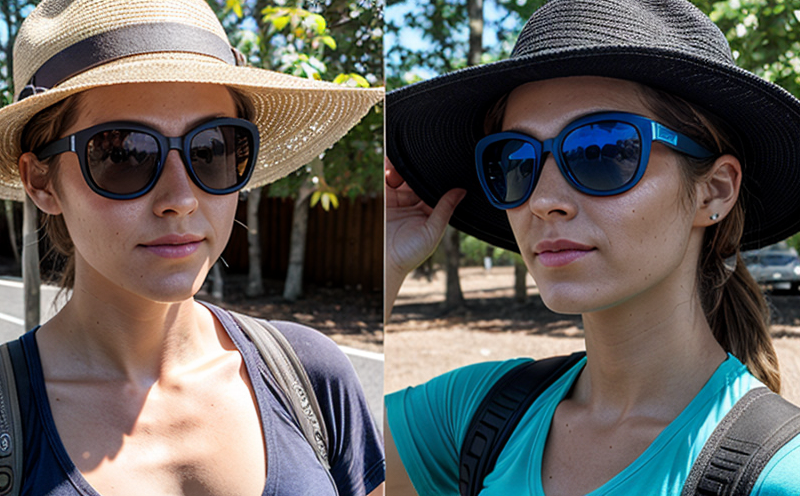Laboratory UV resistance testing of household textiles
UV (ultraviolet) radiation is a significant factor in the degradation and fading of household textiles. Understanding how these materials withstand prolonged exposure to sunlight can be critical for product longevity, customer satisfaction, and compliance with international standards. This service provides detailed analysis using controlled laboratory conditions to simulate real-world UV exposure.
The testing process begins with precise sample preparation. Depending on the fabric type, samples are cut into standard sizes that accurately represent typical use scenarios. The test specimens undergo accelerated aging through UV radiation from specialized lamps designed to mimic solar spectrum and intensity. This setup ensures consistent results across all tests conducted.
The laboratory uses state-of-the-art equipment such as UV-aging chambers equipped with xenon arc bulbs, which emit a broad spectrum of light similar to sunlight. These devices provide an accelerated aging process by delivering the equivalent of several months or even years of outdoor exposure in just weeks or days.
After undergoing UV testing, samples are visually inspected for colorfastness and overall appearance changes. Additionally, instrumental measurements may be taken using spectrophotometers to quantify alterations in reflectance spectra. These data points help determine not only the level of fade resistance but also provide insights into potential variations within batches or across different production runs.
Accurate and reliable testing is further ensured by adherence to international standards such as ISO 17585, which specifies methods for determining lightfastness of textile materials. Compliance with these guidelines ensures that test results are comparable internationally and meet industry expectations.
The importance of UV resistance cannot be overstated when considering long-term product performance and customer satisfaction. By identifying weak points early in the development cycle or during production, manufacturers can make necessary adjustments to improve fabric durability without compromising aesthetic appeal or functionality.
In conclusion, laboratory UV resistance testing offers invaluable insights into the behavior of household textiles under realistic weathering conditions. It serves as a vital tool for quality assurance teams looking to enhance product longevity and meet stringent regulatory requirements.
Scope and Methodology
| Test Parameter | Methodology | Description |
|---|---|---|
| Sample Preparation | Cutting into standard sizes, washing if required per customer specifications. | This step ensures uniformity among samples for consistent testing results. |
| UV Exposure | Use of xenon arc lamps with controlled exposure times and intensities. | To simulate real-world UV conditions but on a faster scale. |
| Colorfastness Evaluation | Visual inspection alongside instrumental measurements using spectrophotometers. | A combination approach to assess visible changes accurately. |
| Data Interpretation | Analyzing both qualitative (visual) and quantitative (instrumental) data to draw conclusions. | Provides comprehensive understanding of fabric stability post-UV exposure. |
This structured approach allows for thorough evaluation of household textiles, ensuring that they maintain their appearance and functionality over extended periods exposed to natural UV light. The use of advanced techniques ensures reliability and accuracy in determining the UV resistance of various textile types.
Customer Impact and Satisfaction
Understanding and addressing customer needs is at the heart of our service offerings. By offering laboratory UV resistance testing, we help manufacturers produce higher quality products that better meet consumer expectations regarding longevity and appearance retention. This aligns closely with increasing demand for sustainable practices within the textile industry.
Our rigorous testing protocols allow customers to identify potential issues early in their product lifecycle, enabling them to implement corrective measures promptly. This proactive approach helps maintain brand reputation while enhancing overall customer satisfaction through consistently reliable products.
Moreover, compliance with international standards like ISO 17585 demonstrates commitment to quality assurance and environmental responsibility. Adherence to these guidelines ensures that our services meet industry benchmarks, providing peace of mind for both clients and consumers alike.
Ultimately, by investing in our laboratory UV resistance testing service, customers can expect improved product performance, enhanced customer satisfaction, and increased market competitiveness through the production of durable, aesthetically pleasing household textiles.
Environmental and Sustainability Contributions
- Emission reductions: By identifying materials that do not degrade under UV exposure early in development stages, less waste is generated throughout manufacturing processes.
- Promotion of sustainable practices: Encourages manufacturers to select fabrics with superior UV resistance properties, reducing the need for frequent replacements and repairs.
- Enhanced resource efficiency: Identifying robust materials helps minimize raw material consumption during production cycles.
Our laboratory UV resistance testing not only supports customers in meeting regulatory requirements but also contributes positively towards sustainability goals. Through precise evaluation of fabric performance under simulated outdoor conditions, we contribute to a more sustainable future by promoting the use of eco-friendly textiles and reducing environmental impact.





